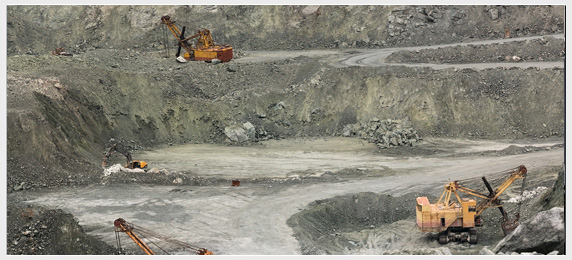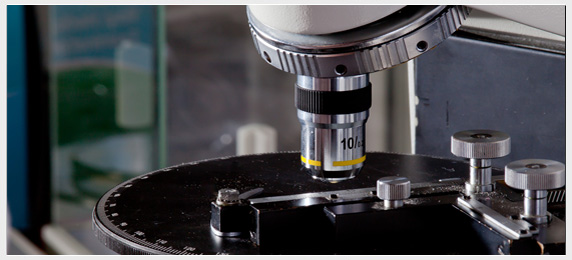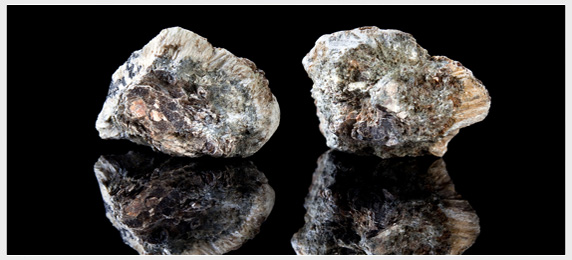Past and present uses for Asbestos
Asbestos History
Asbestos is a very old material which was first used by humans in the Neolithic age as a temper for ceramic products. Prehistoric shards and ware containing asbestos have been found in Finland, central Russia, Norway and Sweden. The first recorded uses of asbestos date back as early as 2500 B.C. It has been known since ancient times in both the western world and Asia as a natural wonder and a source of fibre for expensive and rare textile objects such as shrouds, napkins, tablecloths, and customised clothing.
The name 'Asbestos', comes from the Greek meaning “inextinguishable” and was first written about at about 300 B.C. The Greeks and Romans not only knew that asbestos had low thermal conductivity, was resistant to fire and acids but also realised that asbestos had harmful biological effects.
The efficacy of asbestos containing materials outweighed the health concerns
In addition to western sources, Chinese, Sinhalese and Indian sources mention use of asbestos in their past. The first definite identification of asbestos fabric in Asian sources occurs in a writing dated towards the end of the fifth century B.C. about a fire proof cloth that was cleaned by being exposed to fire.
Although many people of the time noticed the “sickness of the lungs” in the slaves that wove asbestos into cloth, they were so impressed by the asbestos and its seemingly magical properties that they ignored the adverse health symptoms.
The Greeks used asbestos for the wicks of the eternal flames of the vestal virgins, as the funeral dress for the cremation of kings, and as napkins.
It has been suggested that the Romans would clean their asbestos napkins by throwing them into the fire. The asbestos cloth would come out of the fire whiter than it went in, so the Romans named asbestos “amiantus”, meaning “unpolluted”.
Asbestos was seen as a wonder material
For many hundreds of years experiments on asbestos were carried out and records of findings were recorded. Asbestos was woven into cloth linings for suits of armour, asbestos paper was used for writing and textiles were used by the wealthy aristocracy.
The use of asbestos appeared to go into decline during the Middle Ages, although some nobles still made use of asbestos tablecloths. The adventurer Marco Polo was also shown textile items made from asbestos cloth on his travels. He also observed asbestos mining and weaving of asbestos cloth in Asia.
The steady decline in the use of asbestos
Following the departure of the Romans, the use of asbestos declined rapidly in England, although asbestos use in England did become very popular again during the Industrial Revolution during the late 1800s.
The Industrial Revolution represented a huge boom for the asbestos industry. Factories were opening everywhere and new uses for the asbestos mineral were being devised on a regular basis. Commercial asbestos mines sprung up in the late 1800s and many investors thought that asbestos had many possibilities and could make them very rich.
Rail and sea industry make extensive use of asbestos
The railroad industry was among the first to make extensive use of asbestos and asbestos containing products, and because the railroad industry was growing larger by the day, the need for more and more asbestos grew.
Railroad engineers started to use asbestos to line refrigeration units and boxcars and the material was found to be particularly useful as an insulation material for pipes, boilers, and fireboxes in the steam locomotives that were becoming so popular.
The shipyard industry appeared to follow the railroad industry's lead. Shipbuilders made much use of asbestos material as well. Some typical uses included insulation for steam pipes, boilers, hot water pipes, and not surprisingly, incinerators.
Asbestos was so widely used aboard ships at the time that the people who worked in the industry were among the most affected by asbestos related diseases such as mesothelioma and asbestosis. Shipbuilding became especially dangerous during war time. The war effort required many extra ships and when the industry was at its peak, literally millions worked building and repairing the ships.
The health risks of asbestos were usually forgotten or ignored.
At the turn of the twentieth century, people began to notice a large number of deaths and lung problems in asbestos mining towns. In 1920's, it was noticed that many asbestos workers were dying at a very young age.
The first diagnosis of asbestosis was made in 1924. A woman had been working with asbestos since she was about thirteen years old. She died when she was thirty three years old, and an English doctor determined that the cause of death was what he called “asbestosis”. Because of this, a study was done on asbestos workers in England. Over a quarter of the workers showed some evidence of asbestos related lung disease.
The Asbestos Industry Regulations 1931
The first asbestos related laws were passed in 1931 in the form of The Asbestos Industry Regulations 1931. This legislation was intended to increase the ventilation and to make asbestosis an inexcusable work related disease. In the 1930's major medical journals began to publish articles that linked asbestos to certain cancers.
The discovery, or to be exact, the acknowledgement of asbestos related diseases were overshadowed for several years due to the emergence of silicosis. This is a lung disease caused by the inhalation of silica dust. The affected workers brought £300 million in lawsuits against their employers. This had the owners of the asbestos companies running scared, and they then tried to cover up the health effects of asbestos.
Fibreglass as an asbestos alternative
Asbestos companies continued to use asbestos in the manufacturing and construction industries. Despite the fact that many materials, such as fibreglass insulation, were created to replace the more dangerous asbestos, companies that used asbestos ignored the safer alternatives. Not surprisingly, they ignored the danger for the sake of their profits, much like the tobacco industry, (see the short article on asbestos in cigarettes). The conduct of the asbestos companies was particularly bad as the victims were mostly exploited workers who were unaware of the serious health risks they were being exposed to on a day to day basis.
As cars and trucks became popular in the early part of the 20th century, that industry also latched on to asbestos. In cars, asbestos was used in brake pads and brake shoes, and in clutch plates, in fact any components that could be classed as friction products.
Asbestos was also used for the brakes in the elevator shafts of America's ever increasing number of skyscrapers.
Asbestos and the building industry
It was the building industry that gave asbestos its largest boost. Everyone wanted their homes and offices to be safe and warm, so fire resistant asbestos seemed like the ideal solution for those purposes. Asbestos was soon to be found in every home and commercial building. Asbestos was used as a wall insulation material, for floor and ceiling tiles and in roofing tar and shingles.
Asbestos could also be found in most building products on the market. Products like Artex, gaskets, stucco, cement pipes, drywall tape, caulk, rain gutters, plaster, putty and many other materials, all contained asbestos and some to frightening levels! Schools and theatres even boasted about having asbestos curtains as they were considered to be safer than other standard fabrics because of their strength and fire retardant properties.
When the use of asbestos was at its highest, which would have been around the 1940's to 1970's, an estimated 3,000 products made use of the properties that asbestos had to offer.
Some Products that had Asbestos
You used to be able to find asbestos in hair dryers, irons and ironing board covers, toasters, coffee pots, and electric blankets. Because asbestos is also found in vermiculite or talc, trace amounts could also be detected in cosmetics and powders as well as fertilizer and potting soils. Many people will no doubt remember having the top section plate of an ironing board laying around in the garage or shed. This would often be used to protect the wall behind a copper pipe that was being soldered in situ.
The warnings and regulations of the 1970's and beyond went quite a long way to putting an end to much of the asbestos industry. There are still countries today however, where chrysotile asbestos is still mined and exported.
Though there's very little chance of experiencing the degree of exposure that many suffered in the early part of the 20th century, the risk is still present in older buildings, imported automobile products, and in places where natural deposits of the mineral are commonplace.
Further Information
If you would like to know more or are interested in a quote we would be happy to help. Phone us on 07730 446 224, email us at info@survey-safe.com or fill in our enquiry form and we will be in touch as soon as possible.
Survey Safe® - 07730 446 224 - info@survey-safe.com
Registered Office: Wagstaffs, Richmond House, Walkern Road, Stevenage, Herts SG1 3QP
Survey Safe® :: 07730 446 224
Survey Safe®
07730 446 224
Areas we cover
Areas we cover in London :: A
Areas we cover in London :: B
Areas we cover in London :: C
Asbestos articles
Asbestos: A possible cure being developed for Mesothelioma
Asbestos: The importance of regular staff medicals
Mesothelioma and Asbestosis: A comparison
86 per cent of school buildings contain asbestos
Workplace exposure limits
Controlling noise at work
Legionella risk
Asbestos re-inspection
Asbestos related products
Magnesite floor screeds
Asbestos in vermiculite
Chrysotile fuse carriers
Asbestos air monitoring
Asbestos cement roofs
Surviving mesothelioma
Cancer deaths from asbestos at all time high
Asbestosis
Asbestos exposure at ground zero after 9/11
Asbestos insurance claims
More asbestos related prosecutions
New asbestos regulations introduced
Asbestos contractor fined
Asbestos is a hidden health hazard in millions of homes
Asbestos exposure
Contractor fined for removing asbestos in an open wheelbarrow
Past and present uses for asbestos
Asbestos filters used in cigarettes
Privacy policy
Website map







 1
1 2
2 3
3 4
4 5
5



